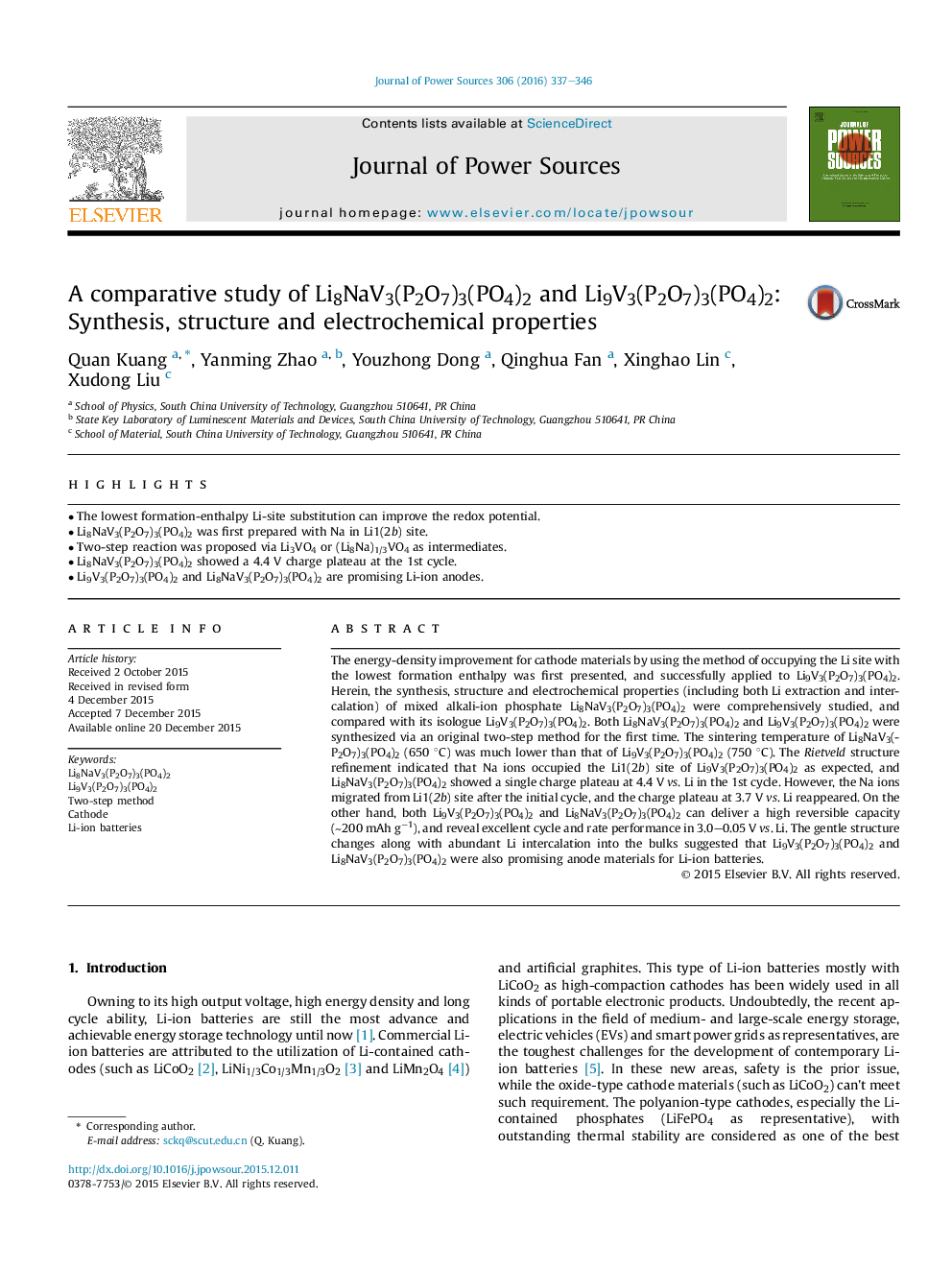| Article ID | Journal | Published Year | Pages | File Type |
|---|---|---|---|---|
| 1292376 | Journal of Power Sources | 2016 | 10 Pages |
•The lowest formation-enthalpy Li-site substitution can improve the redox potential.•Li8NaV3(P2O7)3(PO4)2 was first prepared with Na in Li1(2b) site.•Two-step reaction was proposed via Li3VO4 or (Li8Na)1/3VO4 as intermediates.•Li8NaV3(P2O7)3(PO4)2 showed a 4.4 V charge plateau at the 1st cycle.•Li9V3(P2O7)3(PO4)2 and Li8NaV3(P2O7)3(PO4)2 are promising Li-ion anodes.
The energy-density improvement for cathode materials by using the method of occupying the Li site with the lowest formation enthalpy was first presented, and successfully applied to Li9V3(P2O7)3(PO4)2. Herein, the synthesis, structure and electrochemical properties (including both Li extraction and intercalation) of mixed alkali-ion phosphate Li8NaV3(P2O7)3(PO4)2 were comprehensively studied, and compared with its isologue Li9V3(P2O7)3(PO4)2. Both Li8NaV3(P2O7)3(PO4)2 and Li9V3(P2O7)3(PO4)2 were synthesized via an original two-step method for the first time. The sintering temperature of Li8NaV3(P2O7)3(PO4)2 (650 °C) was much lower than that of Li9V3(P2O7)3(PO4)2 (750 °C). The Rietveld structure refinement indicated that Na ions occupied the Li1(2b) site of Li9V3(P2O7)3(PO4)2 as expected, and Li8NaV3(P2O7)3(PO4)2 showed a single charge plateau at 4.4 V vs. Li in the 1st cycle. However, the Na ions migrated from Li1(2b) site after the initial cycle, and the charge plateau at 3.7 V vs. Li reappeared. On the other hand, both Li9V3(P2O7)3(PO4)2 and Li8NaV3(P2O7)3(PO4)2 can deliver a high reversible capacity (∼200 mAh g−1), and reveal excellent cycle and rate performance in 3.0–0.05 V vs. Li. The gentle structure changes along with abundant Li intercalation into the bulks suggested that Li9V3(P2O7)3(PO4)2 and Li8NaV3(P2O7)3(PO4)2 were also promising anode materials for Li-ion batteries.
